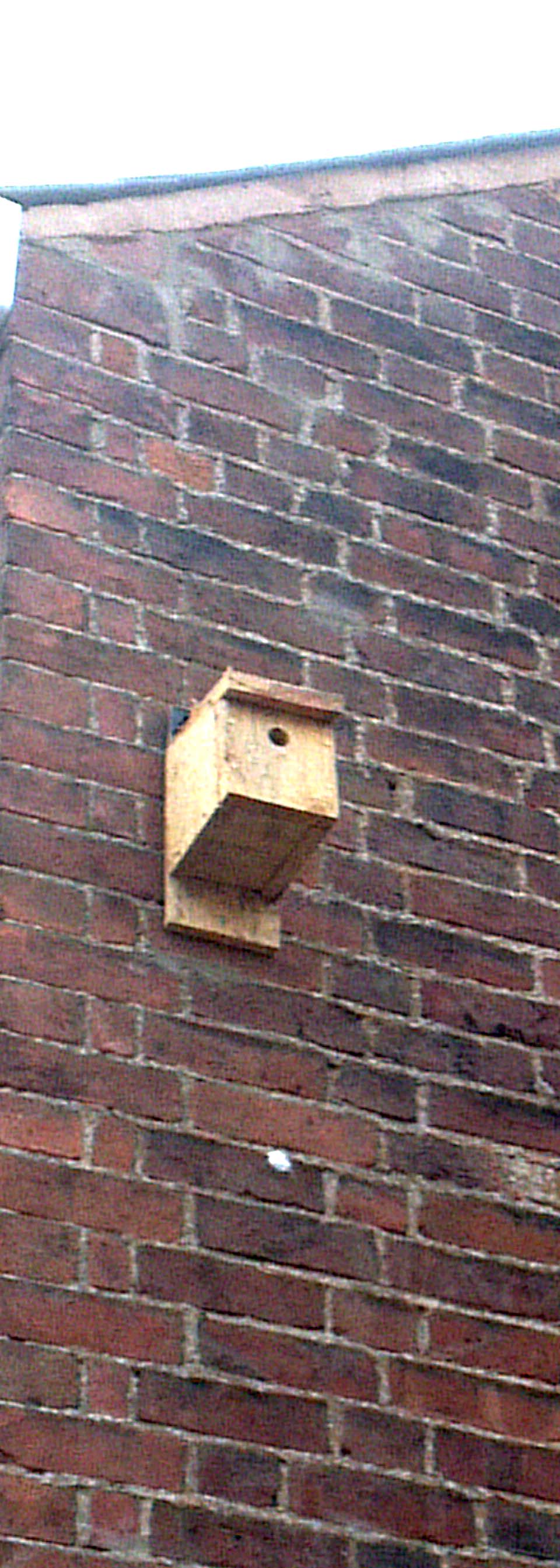At the weekend we completed the RSPB Big Garden Birdwatch. We did it last year (read about it here) in our old house. I’d seen a goldfinch at our bird feeder in the week, and the blackbird and his wife regularly sit in the Japanese maple so we were hopeful for some good results. As with last year it was very revealing to sit and watch our garden for a whole hour. Little Owl trained her binoculars on every hedge and tree, pencil at the ready to mark any avian visitors down in her notepad. Five minutes passed, then ten, fifteen. A seagull flew far over our heads and landed on a distant chimney pot. That doesn’t count, they have to be in the garden.
Then Little Owl spotted something awful skulking around the back of the shed. A grey nose poked its way out warily, followed by a pair of whiskers and then the rest of one of our neighbour’s cats. Little Owl let out a yell of rage, roared across the wet grass in her socks and sent him packing. A fresh pair of socks later and she took up her post again. The blackbird flitted over to the Japanese maple then rose quickly up and away. Little Owl noted him down in her book with glee but the reason he’d flown away was slinking its way along the top of our back fence. The big ginger tom belonging to another of our neighbours was out on the prowl. Little Owl was incensed. Down she went. After a second pair of clean socks she was back on duty.
A couple of minutes passed, Little Owl’s Early Learning Centre binoculars scanning the garden, and her shoulders suddenly drooped. She’d caught sight of a pair of black pointy ears poking out from behind the top of our compost bin. And that is pretty much the theme of our Big Garden Birdwatch. Not so much a birdwatch as a cat watch. Every one of all the surrounding neighbours’ cats made a visit to our garden in that hour and there is about eight of them.
In a way I’m glad this happened. We’d known the cats were a problem when we moved in. Well, a problem if you want a garden that wildlife and children can enjoy, perhaps not if you’re a cat lover. The local cats had obviously got used to using our previously neglected garden as their own private litter tray. It was after one incident where Finch had gone out into the garden before I’d been able to check it, and come in covered in cat poo that we got serious about the cats. We bought a water-powered cat scarer and it worked an absolute treat. Connected to the garden hose it would shoot out a powerful jet of water whenever anything came across its motion sensor (it was also enormous fun for the kids to dance in front of on a hot summer’s days!). Unfortunately, over the winter we forgot to switch it off one icy night and it froze and cracked. Not long after I found the first signs of the litter-tray habit coming back. And now the results of our birdwatch…
Big Dreamer ordered a new cat scarer that evening and several metres of prickle-strip to tack to the tops of our fences. The cat scarer is probably not the most environmentally friendly option from a water usage point of view. We’ve toyed with the sonic cat scarer recommended by the RSPB but are worried it would affect the hedgehog. It’s such a shame to have to be like this. Of course, people have every right to own a cat if they want to, but to have this size of mammal at this density would never happen in the wild. And the difficulty with cats over dogs is that they don’t stay at home. Research has shown that the territorial range of an urban domestic female cat is 0.2 to 0.5 acres. The range of a domestic urban tom is ten times that. There’s not a lot we can do about our neighbours’ pet choices, other than extol the virtues of goldfish in their hearing, so prickle-strips it is.
A strange sound caught my ear out of the open window this morning, not dissimilar to our washing machine’s slow spin cycle. A flock of swans swept over the ridge tiles on their way to the river. They were majestic. Nature is a wonderful thing and worth doing our best to help and protect, even if we can only make a difference in our little patch of green. As a step in the right direction we’ve installed a bird box on our gable end. I don’t think it’s the accepted wisdom to put them on the ends of terraces but our neighbours at our old house had one in a similar spot that was actively being occupied. Apparently they can take a couple of years to start being used so, here’s to year 1 and counting!







